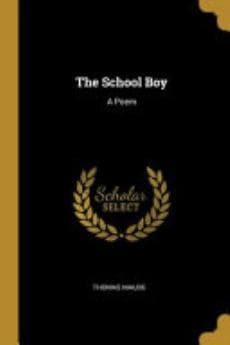- Published on
The School Boy A Poem
- Authors

- Name
- Thomas Maude
- @search?q=Thomas Maude

The School Boy by William Blake
Introduction
William Blake's poem "The School Boy," part of his works in "Songs of Innocence" and "Songs of Experience," delves into themes of childhood and the natural world. Initially published in the 1789 "Songs of Innocence," it was later included in "Songs of Experience" to highlight its complex themes. The poem critiques the formal education system, illustrating how it stifles the joy and freedom inherent in children, likening a schoolboy's experience to a caged bird, yearning for freedom.
Structure
"The School Boy" is structured into six quatrains, following an ABABB rhyme scheme, with the first four stanzas presenting self-contained points or illustrations. The transition from the fifth to the final stanza showcases the seasonal cycle from spring to winter, using this progression to mirror the boy's loss of innocence and freedom due to the constraints of education.
Main Themes
The poem addresses the concrete social issue of children's education, exploring deeper concerns regarding the suppression of imaginative vision and the adverse effects of formal learning on the natural joy and creativity of children.
Summary
The speaker, a schoolboy, expresses his love for the summer outdoors, contrasting it with the drudgery of school life under the oppressive watch of a teacher. Education, rather than enlightening, becomes a source of stress, stifling the boy's spirit and joy. The poem questions how a child, like a bird meant for joy, can thrive when confined and subjected to fear, suggesting that such an environment leads to the loss of youthful enthusiasm and growth.
Analysis
- Stanza I: Reflects the boy's joy in nature and his resonance with the freedom of birds and hunters.
- Stanza II: Contrasts this freedom with the dread of schooling, where the oppressive atmosphere under a strict teacher diminishes his spirit.
- Stanza III: Further explores the theme of lost joy due to the constraints of education, suggesting that the natural inclination towards learning and growth is stifled by the school environment.
The poem's progression from joy in nature to despair in education highlights Blake's critique of the educational system of his time, advocating for a learning environment that nurtures rather than suppresses the natural inclination towards joy and creativity.
Conclusion
"The School Boy" eloquently critiques the formal education system's impact on children's natural joy and creativity. Through vivid imagery and structured contrast between the freedom of nature and the constraints of the classroom, Blake argues for an educational approach that nurtures rather than stifles the imaginative vision and innate joy of children.
